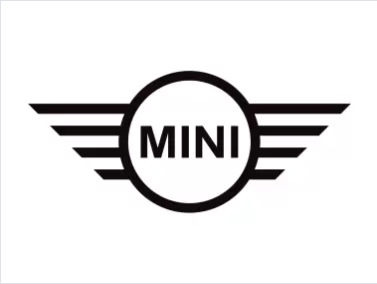Car Ignition Switch Repair: A Comprehensive Guide
The ignition switch is a critical element of any car's electrical system. It is the mechanism accountable for switching on the ignition and powering numerous electrical systems, consisting of the dashboard lights and fuel pump. When Key Ignition Repair , it can cause problems such as a car not beginning, stalling, or electrical failures. Understanding the repair process can save car owners time and money. This article will cover whatever you need to understand about car ignition switch repair, including typical signs of failure, diagnostic actions, repair alternatives, and responses to regularly asked questions.
Typical Signs of a Faulty Ignition Switch
Identifying a malfunctioning ignition switch can avoid more damage to the lorry. Here are a few signs that may indicate a problem:
- Engine Won't Start: The most apparent indication of a faulty ignition switch is when the engine stops working to turn over.
- Intermittent Starting Issues: If the car begins in some cases but not others, the ignition switch may be to blame.
- Electrical Accessories Malfunction: If control panel lights or other electrical parts do not work appropriately, it could be due to a failing ignition switch.
- Key Getting Stuck: Difficulty getting rid of the key from the ignition can suggest a problem with the ignition switch.
- Unforeseen Stalling: If the engine unexpectedly shuts off while driving, it could arise from a faulty ignition switch.
Diagnosing the Problem
When confronted with any of the signs above, it is essential to conduct an appropriate medical diagnosis before concluding that the ignition switch requires repair or replacement. Below is a detailed troubleshooting guide.
- Inspect the Battery: Ensure that the battery is fully charged and connections are clean and safe and secure.
- Check the Fuses: A blown fuse can trigger numerous electrical issues. Examine the merges related to the ignition system and replace any that are faulty.
- Check the Key and Ignition Cylinder: A used or broken key or ignition cylinder might trigger starting issues. Check both for wear and tear.
- Use a Multimeter: Utilize a multimeter to evaluate the electrical output of the ignition switch.
- Scan for Error Codes: Use an OBD-II scanner to recognize any saved mistake codes that might offer hints relating to the concern.
Repair Options
When it is verified that the ignition switch is certainly the source of the problem, car owners have a number of alternatives for repair or replacement. Here's a breakdown:
1. Repair the Ignition Switch
Sometimes, it is possible to repair the ignition switch. This might include:
- Cleaning the contacts within the switch to guarantee correct connectivity.
- Replacing only the defective elements instead of the entire switch.
2. Replace the Ignition Switch
If the ignition switch is beyond repair, replacement is the finest option. The procedure normally includes:
- Gathering Tools: You will require a flathead screwdriver, a Phillips screwdriver, and perhaps a socket wrench set.
- Removing the Steering Column Cover: This usually needs loosening a few screws.
- Disconnecting the Battery: Always disconnect the negative battery terminal to avoid electrical shorts.
- Disconnecting the Ignition Switch: Locate the ignition switch and separate it from the wiring harness.
- Setting Up the New Ignition Switch: Plug in the new ignition switch and reassemble the guiding column cover.
Costs Associated with Repair
| Repair Option | Approximate Cost |
|---|---|
| Repair | ₤ 50 - ₤ 200 |
| Replacement | ₤ 150 - ₤ 450 (parts + labor) |
| Professional Diagnosis | ₤ 100 - ₤ 150 (if applicable) |
DIY vs. Professional Help
Diy (DIY) repairs can save money, but they come with dangers. Car owners should think about the following:
- Experience Level: If a person has experience with vehicle repairs, they may feel comfy dealing with the job. However, those without experience should likely seek expert aid.
- Tools Required: Proper tools are required for a successful repair. Lack of appropriate tools can result in additional damage.
- Time Constraints: Professional mechanics can frequently complete the work much faster, saving time and headaches in the long run.
FAQs about Car Ignition Switch Repair
Q: How do I understand if my ignition switch is bad?
A: Warning signs include difficulty beginning your car, intermittent electrical problems, or issues with accessories not working when the ignition is turned on.
Q: Is it safe to drive with a faulty ignition switch?
A: It is not suggested as this can lead to unanticipated stalling and might put you in an unsafe circumstance on the roadway.
Q: Can I replace the ignition switch myself?
A: Yes, if you have the essential tools and skills. Nevertheless, if you doubt, it's finest to consult a professional mechanic.
Q: What is the typical life-span of an ignition switch?
A: Most ignition switches can last in between 10 and 15 years, but aspects such as frequency of use and ecological conditions can affect their life-span.
Car ignition switch repair is a vital topic for car maintenance. Recognizing the indications of failure, carrying out appropriate diagnostic treatments, and comprehending your repair options can help individuals handle their car's electrical systems successfully. Whether one select a DIY repair or looks for professional assistance, resolving ignition switch concerns immediately can boost lorry safety and dependability.

